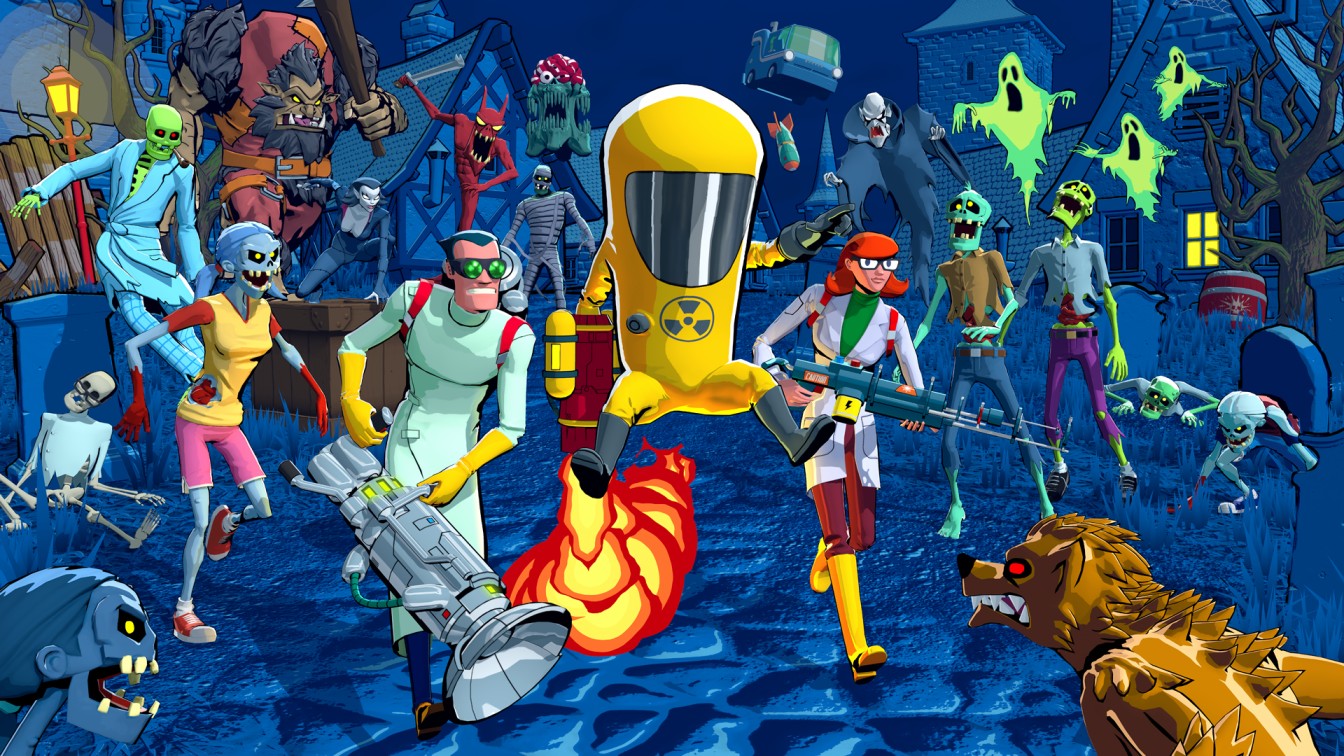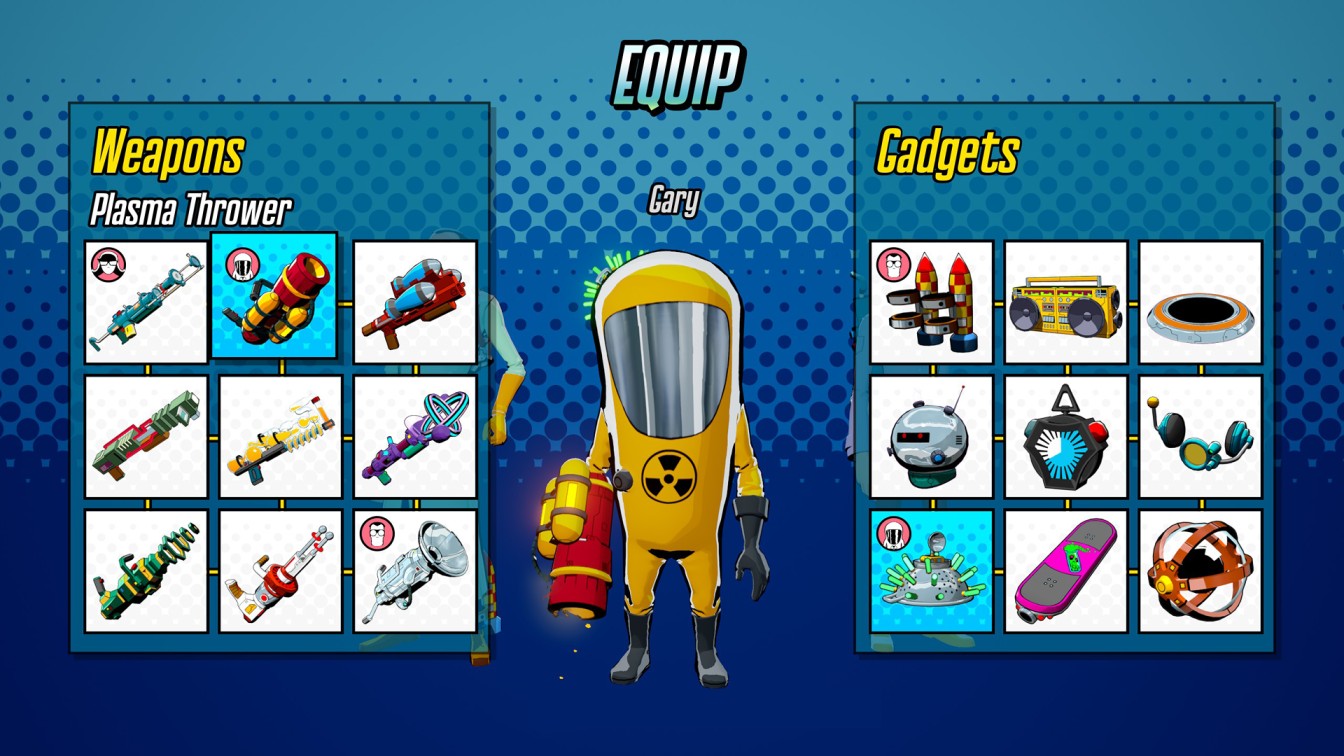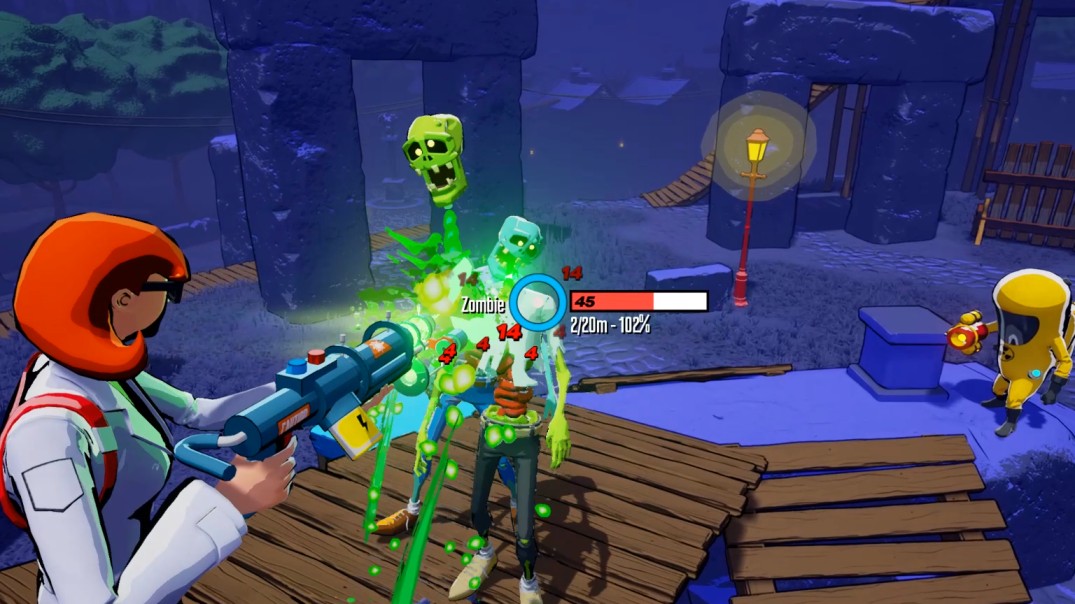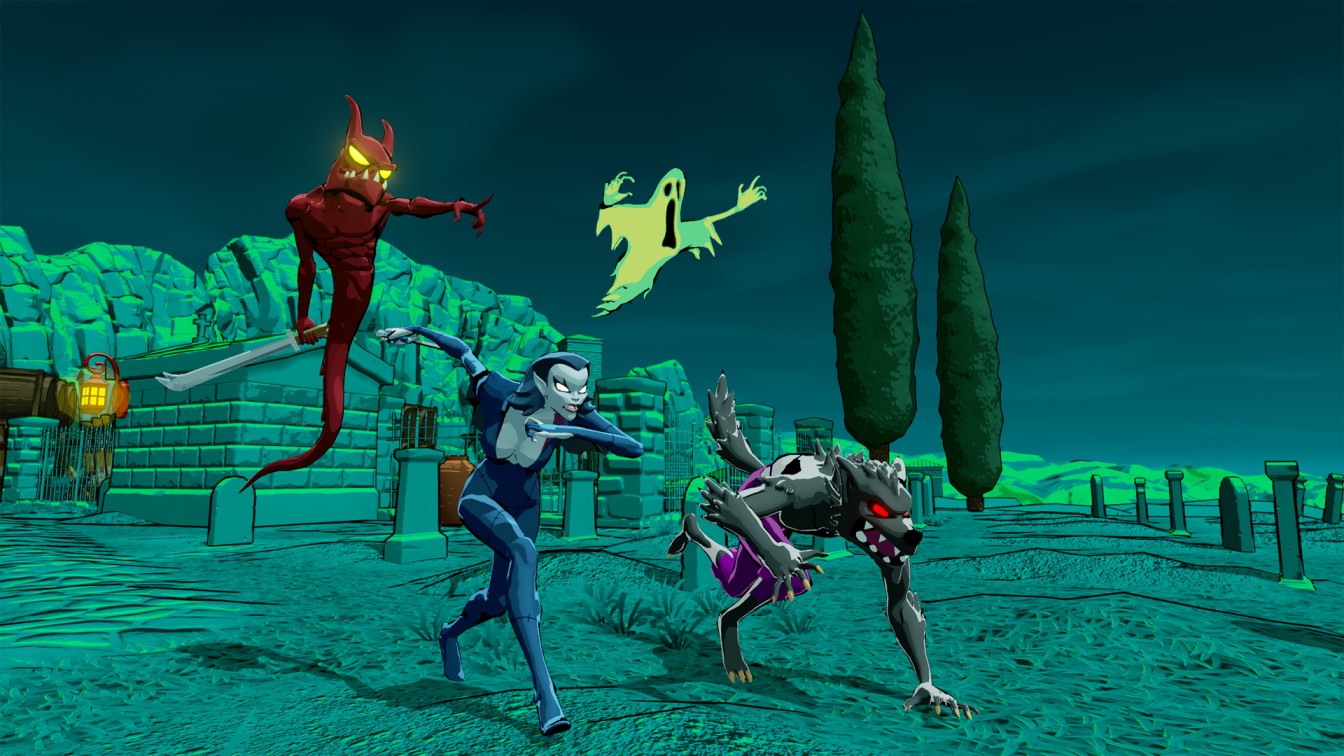
When first looking at Research and Destroy, it’s easy to have the ‘here we go, another post apocalyptic shooter’ demeanor. Beyond that derivative, albeit very successful story genre lies a very interesting turn-based strategy and third person shooter hybrid.
Research and Destroy should make you think Valkyria Chronicles meets Scooby Doo with a bit of 1950’s sci fi. The western animation cell shading appearance is particularly interesting too seeing as publisher Spike Chunsoft has a back catalog consisting almost entirely of anime titles. With that, let’s take a further look into this debut game from Implausible Industries.
Research and Destroy
Developer: Implausible Industries
Publisher: Spike Chunsoft
Platforms: Windows PC (reviewed), PlayStation 4, PlayStation 5, Xbox One, Xbox Series X|S, Nintendo Swith
Release Date: April 25, 2022
Players: 1-2 (online and local)
Price: $19.99 USD
Research and Destroy possesses cell shading visuals with smooth animations. It provides that feeling of actually controlling a cartoon-like Ghibli studio Ni no Kuni RPG, albeit with much less details. There were no visible hiccups when performing basic tasks such as navigating your characters. More importantly, when you attack large hordes of enemies, gameplay remains completely stable.
Style wise, Research and Destroy has Pax Americana vibes of cartoons from the sixties in addition to pulp science mysteries that influenced elements of the Fallout series. The game clearly draws inspiration from the already mentioned Scooby Doo from the monsters of classic Hollywood horror movies and a gang assembling in a van to take care of them.
You’ll also see that homages are made pertaining to specific regions as shown in the game’s British map, one in particular that involves a “Twiggerman,” a direct reference to 1970s horror movie The Wicker Man.

With the aesthetic established, the developers provide interesting levels in which the combat takes place. Outside of combat, the player begins with actions made on a world map. The landscape consists mostly of western Europe, North Africa, and Turkey albeit with fictitious names for the regions.
For example, Britain is called the Foggy Isles and the Egyptian area is the Pyramids. You have a 40-day time period to perform actions in the regions. This involves using currency gained from doing missions to build universities, investigating new areas, or researching new weapons and gadgets.
Once the 40-day period is up, the monsters will have a turn in which they amass strongly in a random region. If the player has a university on the attacked region, the player must defend the area. Overall, the world map portion of gameplay effectively establishes a sense of place and the utilitarian practice of better preparing for battle.
The combat style in Research and Destroy is a turn based third person shooter. The player and AI alternate turns moving and attacking one another. As the player, you manage 3 characters: Larry, Gary, and Marie. Larry and Marie can stow weapons and run, whereas Gary is less mobile but possesses higher health allowing him to act as a tank.
Each turn has an 8 second action period. The period is drained by actions like moving around the map and firing weapons. At times, enemies will drop an hourglass item that restores the action period. Once the players action period is over, new enemies will spawn and ones still already existing on the map will move to attack.
While the meter works well for the most part, the draining caused by certain actions is annoying. Primarily, simply holding down the aim button drains time whether or not the weapon is fired. More often than not, it resulted in spamming in and out of aiming to properly target an enemy at the littlest expense possible. It is just frustrating when you have no penalty of looking around while in a stationary state.

The meter is also drained if your character is knocked over and spends time getting back on their feet. This is particularly annoying because it is easy to trip over tiny ledges when your character jumps.
Slamming into walls results in a time drain knockdown as well as health reduction. Losing health for this reason seems a bit absurd because your character experiences zero fall damage. For a game where you play as scientists, it’s interesting certain laws of physics only exist horizontally.
When you get to use your action time to kill enemies is when the game gets fun. There is a diverse arsenal of weapons that prove effective in different scenarios that let you develop different strategies for tackling enemies. As a result, gameplay doesn’t get repetitive.
The most traditional weapon is a machine gun/sniper hybrid in which you can toggle from one mode to another. Placing a character atop a tall structure to pop off headshots monsters with higher mobility is an effective strategy.
Other weapons in Research and Destroy include, but are not limited to, a cluster bomb gun, a flamethrower, and a ray gun that shoots out a huge orb dealing electric damage that would fry large packs of ghosts.
The variety of enemies is quite good. Mummies act as artillery units chucking large poison balls. Zombies have slow and fast variants so you get both the Night of the Living Dead and conversely 28 Days Later types of undead.
There are female vampire assassins, werewolves, and even trolls – it’s just a fun mix of all the classics. It would have been nice if the range of attack for enemies would be shown. Not knowing makes it more difficult to make strategical placements, especially when you are managing characters with low health.

Research and Destroy provides good sound in combat with unique weapon noises, distinct character movement, and all the proper audio fitting of a monster legion. The soundtrack unfortunately is a bit forgettable.
It’s mostly synthesizer that fills the background but does not elevate the combat experience as seen in other turn based strategy games or strategy/shooter hybrids. The most memorable song is an awkward horn rendition of the 1812 overture finale, which plays when a mission is completed.
The story isn’t particularly memorable either, but that is not a bad thing as it serves its primary purpose to fuel the gameplay. The world became lazy and decadent due to an established world peace and elimination of any threat to planetary existence.
In their state of oblivion, the supernatural came and exterminated all known life save the few scientists that went underground. Bidding their time, the scientists waited for the moment they felt equipped to take back the world from the monsters and rebuild society.
To its credit, Research and Destroy doesn’t mimic the doom and gloom post apocalypse world seen in many recent titles. It is light hearted and attempts comedy. It is ultimately fitting of the visual style and provides the framework to move gameplay along.
In totality, Implausible Industries has put together a solid debut title in this game. Research and Destroy has fun aesthetics and the variety it possesses makes for many hours engrossing gameplay. As long as the player is willing to change their style, this game has a lot of replay value where no one battle is the same.
Our Research and Destroy review was done on Windows PC using a copy provided by Spike Chunsoft. You can find additional information about Niche Gamer’s review/ethics policy here. Research and Destroy is now available for Windows PC (via Steam), Xbox One, Xbox Series X|S, Nintendo Switch, PlayStation 4, and PlayStation 5.